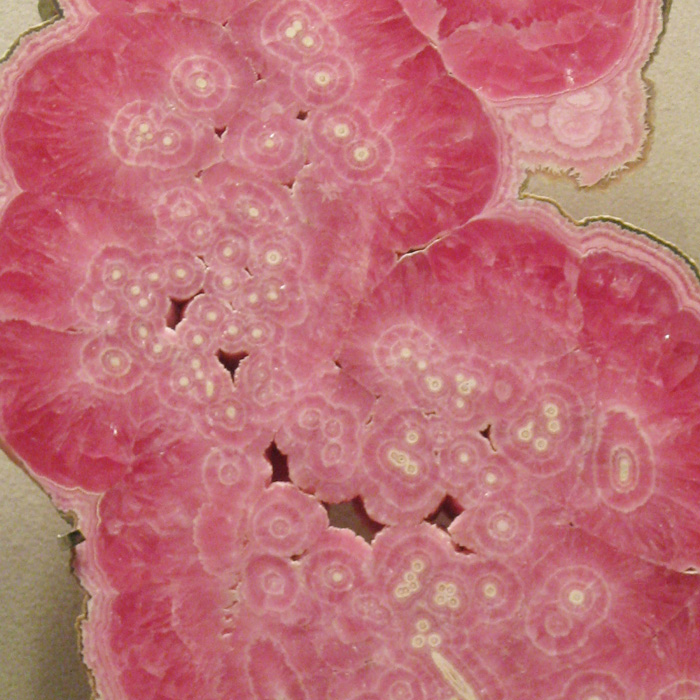Scientific Name: Manganese carbonate
Group: Carbonates
Chemical composition: MnCo3
Colors: rose-pink from manganese carbonate, brown or gray.
Hardness: 3.5 to 4
Formation: Hexagonal/trigonal crystal; Rhombohedral form
Principal Sources: Argentina, Romania
Special Notes: Rhodochrosite forms a complete solid solution series with iron carbonate (siderite). Calcium, (as well as magnesium and zinc, to a limited extent) frequently substitutes for manganese in the structure, leading to lighter shades of red and pink, depending on the degree of substitution. It is for this reason that the most common color encountered is pink. Rhodochrosite occurs as a hydrothermal vein mineral along with other manganese minerals in low temperature ore deposits as in the silver mines of Romania where it was first found. Banded rhodochrosite is mined in Capillitas, Argentina. Catamarca, Argentina has an old Incan silver mine that has produced fine stalactitic examples of rhodochrosite that are unique and very attractive. Cut cross-sections reveal concentric bands of light and dark rose colored layers. These specimens are carved and used for many ornamental purposes. Its main industrial use is as an ore of manganese which is a key component of low-cost stainless steel formulations and certain aluminium alloys. It was named in 1800 from the Greek rhodokhros, “of rosy color.” Colorado officially named rhodochrosite as its state mineral because while the mineral is found worldwide, large red crystals are found only in a few places on earth, and some of the best specimens have been found in the Sweet Home Mine near Alma, Colorado.

